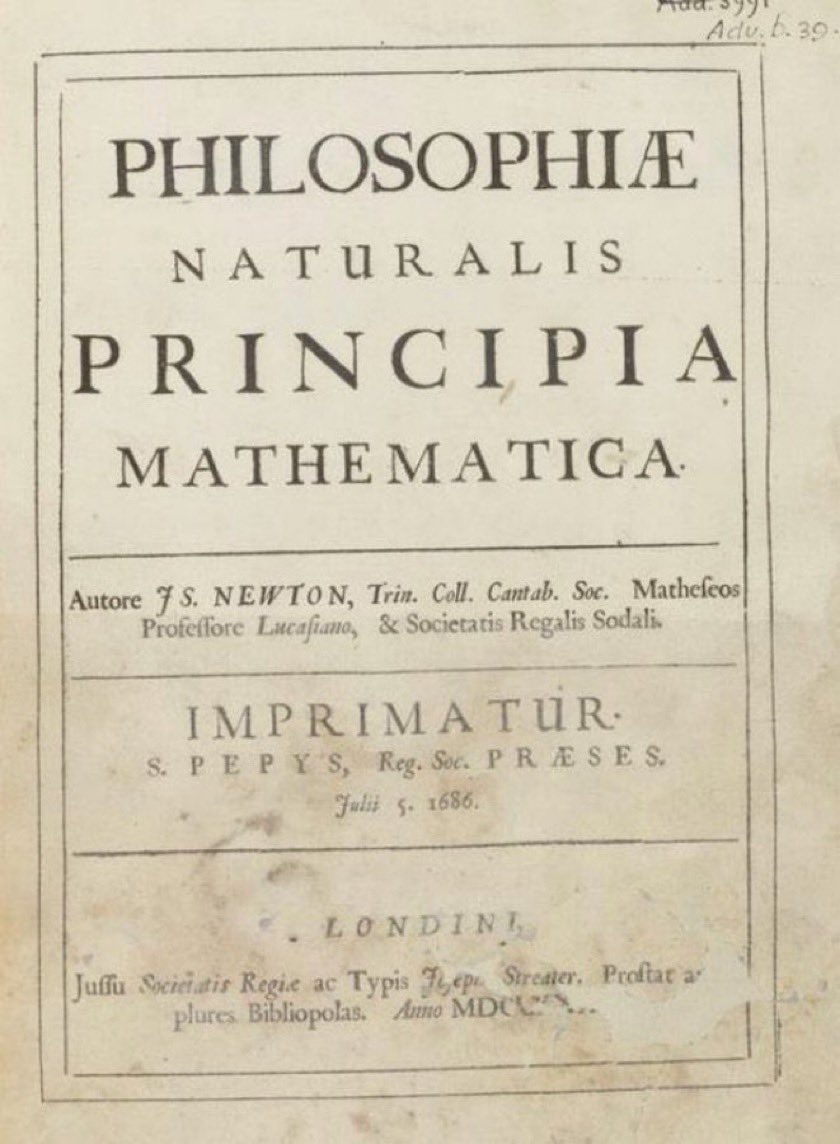
Edwin Hubble submitted his paper "A relation between distance and radial velocity among extra-galactic nebulae" #OTD in 1929. It showed that "extra-galactic nebulae" were moving away from us with a velocity that increased linearly with distance.
Image: Carnegie Observatories
Image: Carnegie Observatories

Hubble built on earlier work by Henrietta Swan Leavitt and Vesto Slipher, and used data that he collected with Milton Humason. You can read the paper in the Proceedings of the National Academy of Sciences, here:
pnas.org/content/15/3/1…
pnas.org/content/15/3/1…
(Both Lemaître and Robertson had published similar results which Hubble may have been aware of but did not cite.)
First, have a look at the following threads for more on the folks who Hubble worked with, or whose work he relied on.
Henrietta Swan Leavitt;
Henrietta Swan Leavitt;
https://twitter.com/mcnees/status/1279392419302256640
Vesto Slipher:
https://twitter.com/mcnees/status/1458928694089510918
Milton Humason:
https://twitter.com/mcnees/status/1428373786479431680
Now back to the Hubble paper.
It seems like quite a bold move, drawing a straight line through this distance-vs-velocity scatter plot. But Hubble's conclusion was borne out by subsequent observations.
Figure: PNAS March 15, 1929 vol. 15 no. 3 168-173
It seems like quite a bold move, drawing a straight line through this distance-vs-velocity scatter plot. But Hubble's conclusion was borne out by subsequent observations.
Figure: PNAS March 15, 1929 vol. 15 no. 3 168-173

We now understand that this phenomenon is the result of cosmic expansion. But Hubble was hesitant to speculate too much about the meaning of his result — the words "recession" and "expansion" don't appear anywhere in the paper. 

However, Hubble couldn't resist mentioning the “de Sitter effect.” He was referring to Willem de Sitter's cosmological solution of Einstein's general relativity, where a positive vacuum energy dominates other sources and drives an accelerating expansion of the universe. 

Hubble admitted that a linear fit to his data would only be a first approximation of the expansion dynamics of a de Sitter-like universe.
Indeed, given the small data set and the significant systematic errors in distances, the results in Hubble's paper could have been explained by something besides cosmological expansion. And the de Sitter universe is only one of many possible models. Everything starts off linear.
So it was an odd bit of speculation to end his paper. De Sitter’s solution was published 12 years earlier in 1917. Friedmann’s 1922 work on expanding cosmological models included matter and was more recent. It’s like Hubble heard hoofbeats and jumped right to zebras.
After Hubble’s paper, most physicists and astronomers assumed the data would fit a Friedmann model with an expansion that was slowing down. They set to work measuring the Hubble constant (the slope of the line in the distance-vs-velocity plot) and the “deceleration parameter."
For instance, here's a photo from the July 1932 issue of Fortune Magazine showing Einstein and de Sitter "revising their theories on a Cal Tech blackboard, to accord with Dr. Hubble's discoveries in the sky."
Image Credit: Keystone
Image Credit: Keystone

It looks like Hubble was probably right, though he had no way of knowing it. The last 20+ years of cosmological observations, starting with type IA supernova results in the 90s, suggest that the large scale expansion of the universe is likely dominated by positive vacuum energy.
The simplest explanation of the data (though not the only one) is that we live in a Universe that, as the density of matter dilutes over time compared to the constant vacuum energy, will increasingly resemble de Sitter's solution.
• • •
Missing some Tweet in this thread? You can try to
force a refresh












